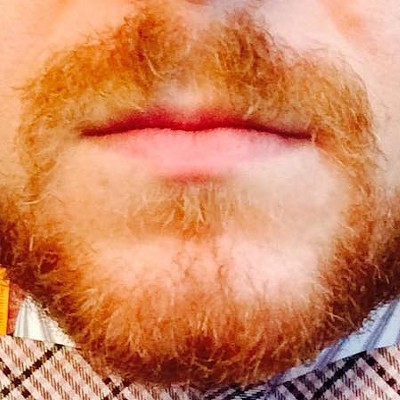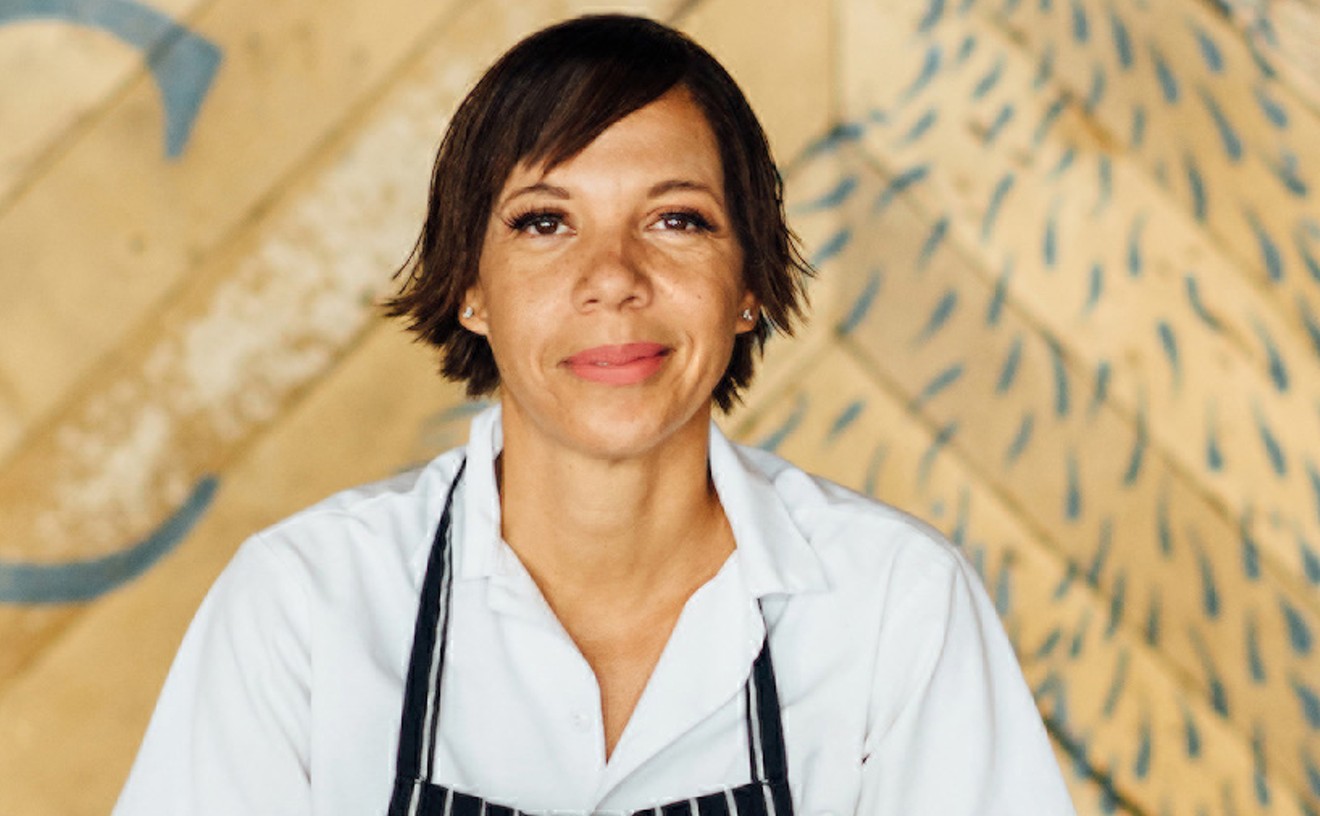After 15 years as a fly fishing guide in the Florida Keys Jon Milchman couldn't take it anymore. It wasn't the sun, the azure water, or the relaxed, heat-stifled lifestyle. He couldn't spend another year watching the destruction of an ecosystem he'd grown to love.
“I watched species decline, algal blooms, and seagrasses die off,” the 47-year-old says. "There were too many people crammed into too small areas with too limited resources.”
The last straw came in 2010 after the oil rig Deepwater Horizon exploded and dumped nearly five million gallons of crude into the Gulf of Mexico. Milchman said the combination of a booming population and the never-ending pollution of humanity's food sources pushed him in a new direction.
"If we're going to feed all those people, it has to be aquaculture," he argues.
The following year he and his partners planted the seeds of Oceanus Seafood, a Homestead fish farm nestled into an otherwise unimpressive white warehouse on a back road sandwiched between towering palm tree farms. Five years and $10 million later, the fish farm is pulling hundreds of pompano out of its 78,000-gallon tanks each week and is poised to become the first fish farm in the world to make farming tripletail commercially viable. About 2,500 pounds of the popular and pricey fish, which can be found wild in Florida waters, are expected to become available to restaurants via Gary's Seafood around the holidays.
Oceanus isn't the first group of fish farmers and researchers to try to grow tripletail, which is prized by chefs for its buttery texture and lush flavor. In 2002, a team from the University of Southern Mississippi's College of Marine Sciences caught a group of mature tripletail, some weighing up to 30 pounds each, to try to breed in captivity. That effort failed after the eggs they harvested were consistently too small to be fertilized. A Virginia fish farm had had more success in growing tripletail but not at a large enough scale to make them commercially viable.
The key, Milchman said, has been keeping adult tripletail, an easily stressed species, in separate tanks, often in the dark so as to promote spawning of healthy eggs. Then there's staff on hand around the clock to inspect the microscopic eggs to see if they're fertilized, then move them into grow tanks where they're fed a combination of algae and the single-cell creatures called rotifers until they grow large enough to move onto traditional fish feed.
But more impressive than Milchman and his team's ability to successfully grow tripletail when others have failed is the facility where they're doing it. Entering it requires preparation akin to scrubbing into surgery. You have to pull on a pair of thick, black rubber boots. And before and after entering each room there are shallow rubber mats filled with disinfectant to walk through to halt any possibility of disease. There's also an endless regiment of liquid hand sanitizers. Disease is among the biggest threat to a fish farm, and Oceanus even mitigates with exotic crop insurance provided by Lloyd's of London. Once inside, there's a low hum rumbling throughout the building that's stuffed with massive, olive green cylinders that either bear tens of thousands of fish or are involved in cleaning and recycling millions of gallons of water.
Here's how the whole system works:
The farm's water comes from saltwater intrusion that seeps into the mainland from the ocean. The saltwater can only be drawn from a depth of at least 45 feet, where it undergoes a natural filtering process thanks to the area's limestone bedrock.
Once out of the ground the water is pumped into the farm's massive grow out tanks that spin like whirlpools as pompano, which at the moment is Oceanus' main crop, swim in a constant circle. Early on the fish feed consisted of mostly chicken by-products and algae designed by the U.S. Department of Agriculture's aquaculture research lab but the farm has had to switch to more traditional feed, one that includes fish meal, after the original food began arriving as a fine dust rather than pellets. The first feed became useless as it gave the fish diarrhea (yes, diarrhea), which makes keeping the water clean nearly impossible.
The pompano spend eight to nine months swimming and eating in those 78,000-gallon tanks until they reach a weight of about one-and-a-quarter pounds and are ready for harvest. But what happens to the water they live in is nearly as important as what happens to the fish themselves. Milchman's team designed the system to give off as little waste as possible. And the bulk of the waste in fish farming comes from the water the fish are constantly soiling. The circulating water in the tanks helps deal with this using a settling device to pull all that waste to the bottom of the tank where it's pushed through a filter with holes as small as 60 microns. For reference, the average human hair is about 100 microns wide. Part of what helps keep the water clean are beneficial bacteria and organisms like algae that in large numbers can outcompete any harmful bacteria that may enter the system.
After the waste is filtered out of the water, a biofilter scrubs it clean of carbon dioxide (saltwater fish have a particularly low tolerance to the stuff) and the water is re-oxygenated with ozone, a three-part oxygen molecule that sterilizers the water before breaking down into the two-part oxygen molecule the fish can use.
So far, Oceanus' pompano seem to be enjoying some early success. Former Michael's Genuine Food & Drink chef de cuisine Niven Patel used it during his brief stint at Cheeca Lodge and plans to put it on the menu at Ghee Indian Kitchen slated to open later this year. "It's great stuff," Patel says. Milchman said he's also sent portions of his pompano to celebrity chefs like John Besh and José Andrés who've given their stamps of approval. New York City's Acme Smoked Fish is also taking deliveries of the stuff and smoking in the style of whitefish or whiting.
The lone concern for the product, it seems, is if Milchman can get his stocks back onto a better feed. Fish feed is one of the most important and often criticized parts of aquaculture. In an engrossing 2010 TED talk by Dan Barber, the celebrated chef of Blue Hill at Stone Barns, described how a farmed fish he loved to work with became untouchable after he learned the farm it came from sometimes used 15 pounds of chicken or fish byproduct to produce one pound of farmed fish. Oceanus' rate is far better, Milchman said, often hovering around a two-to-one ratio. As far as he knows the food he's using contains no hormones, no antibiotics, and no genetically modified ingredients.
Even so, Milchman said he's considering building his own food production facility on site so they can control the feed from top-to-bottom.
"Everything that we’re doing is trying to be the most sustainable fish farm out there," he said. "Is everything perfect, no, but you've got to start somewhere and learn along the way."
For more, follow Zach on Twitter or Instagram.
[
{
"name": "Air - MediumRectangle - Inline Content - Mobile Display Size",
"component": "19274298",
"insertPoint": "2",
"requiredCountToDisplay": "2"
},{
"name": "Editor Picks",
"component": "17482312",
"insertPoint": "4",
"requiredCountToDisplay": "1"
},{
"name": "Inline Links",
"component": "18711090",
"insertPoint": "8th",
"startingPoint": 8,
"requiredCountToDisplay": "7",
"maxInsertions": 25
},{
"name": "Air - MediumRectangle - Combo - Inline Content",
"component": "17482310",
"insertPoint": "8th",
"startingPoint": 8,
"requiredCountToDisplay": "7",
"maxInsertions": 25
},{
"name": "Inline Links",
"component": "18711090",
"insertPoint": "8th",
"startingPoint": 12,
"requiredCountToDisplay": "11",
"maxInsertions": 25
},{
"name": "Air - Leaderboard Tower - Combo - Inline Content",
"component": "17482313",
"insertPoint": "8th",
"startingPoint": 12,
"requiredCountToDisplay": "11",
"maxInsertions": 25
}
]











